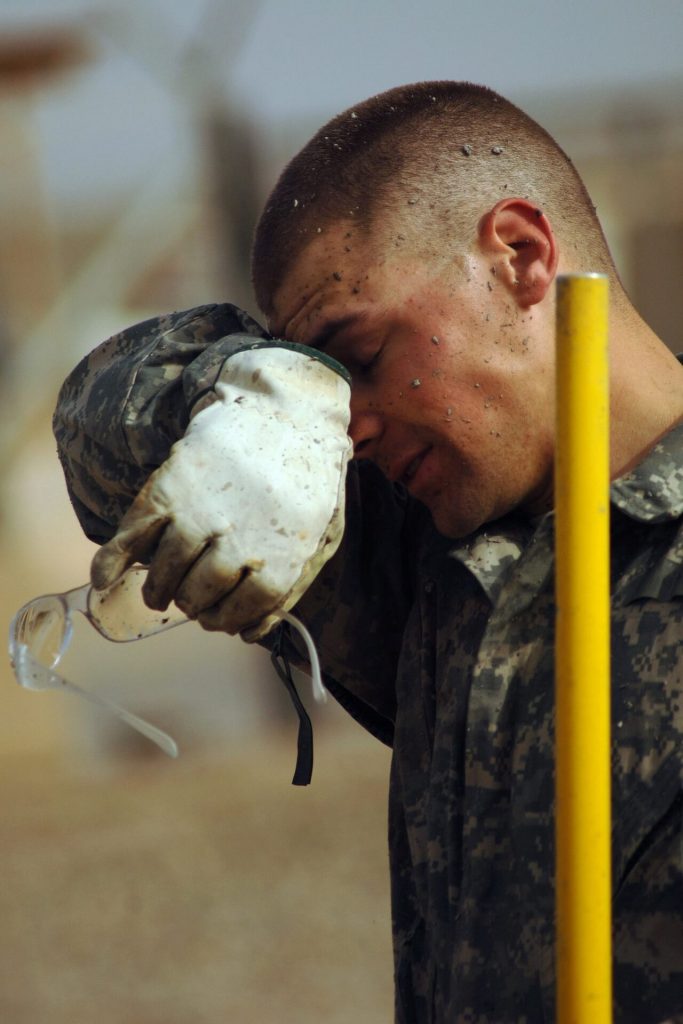Heat stroke is a condition caused by your body overheating, usually as a result of prolonged exposure to or physical exertion in hot temperatures. This most serious form of heat injury (heat rash, heat cramps and heat exhaustion being others) on the heat disease spectrum, heatstroke can occur if your body temperature rises to 104 F (40 C) or higher. With much of the nation currently in a dangerous heat wave, we at Security Specialists want you and your staff to recognize the signs of heatstroke and know what actions to take if one of your employees develops heatstroke.
Heatstroke requires emergency treatment. Untreated heatstroke can quickly damage your brain, heart, kidneys and muscles. The damage worsens the longer treatment is delayed, increasing your risk of serious complications or death. Heat stroke can also cause permanent disability if the person does not receive emergency treatment.
Symptoms of heatstroke include:
- Body temperature of 104°F (40°C) or higher.
- Brain symptoms. Confusion or problems thinking clearly.
- Fast breathing (hyperventilation).
- Fast heartbeat.
- Skin redness (flushing) and warmth or heat.
- Dry skin.
- Vomiting or diarrhea.
- Muscle cramps or weakness.
- Headaches.
- Absence of sweating due to dehydration.
- Changes in blood pressure (maybe high or low).
Treating Heat Stroke Victims
- Call 911 for emergency medical care. Heat Stroke must be treated medically and involves cooling the body as soon as possible.
- Stay with the worker until emergency medical services arrive.
- Move the worker to a shaded, cool area and remove outer clothing.
- Cool the worker quickly, using the following methods:
- With cold water or an ice bath, if possible
- Wet the skin.
- Soak clothing with cool water.
- Circulate the air around the worker to speed cooling.
- Place cold wet cloths or ice on the head, neck, armpits, and groin; or soak the clothing with cool water.
- At the hospital, body temperature reduction techniques may include:
- Placing the patient into an ice bath
- Evaporative techniques, such as using a fan to blow air on wet skin
- Invasive cooling techniques, such as chilled intravenous (IV) fluids
- Additionally, ice packs applied to the body or cooling blankets may be used as adjuncts to the methods above
- Treatment continues until the patient’s core body temperature is 101.3°-102.2° F (38.5°-39° C).











